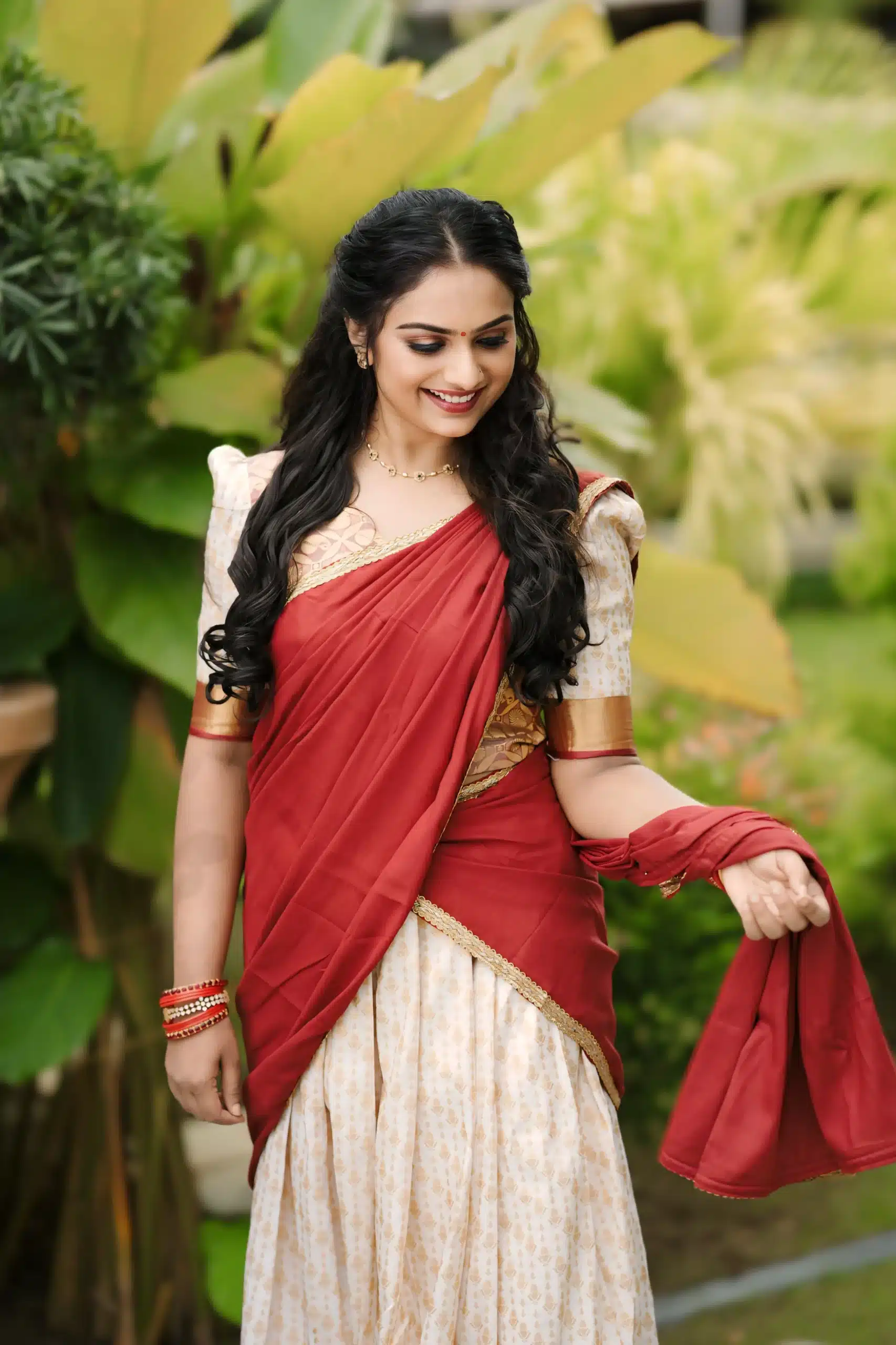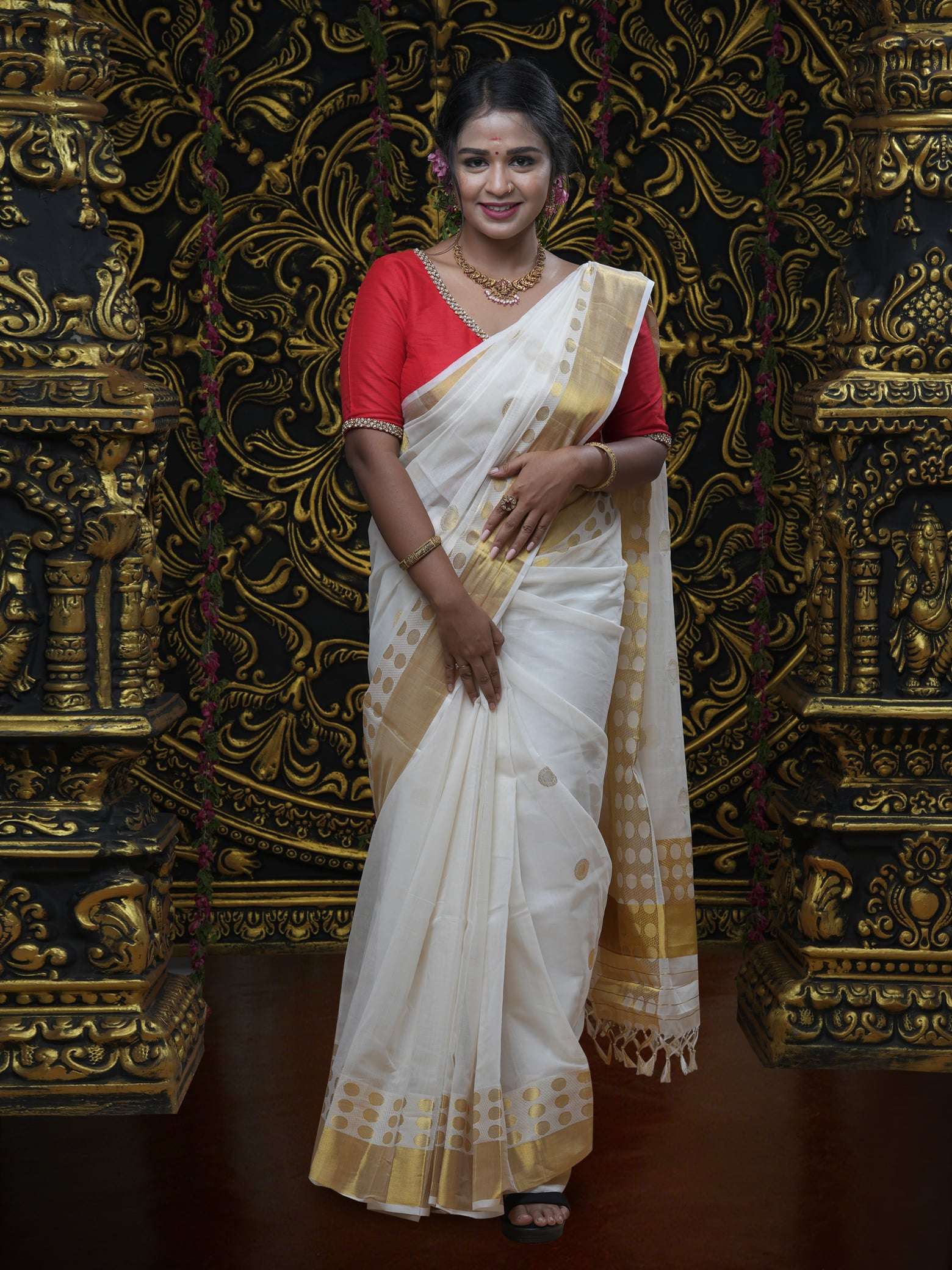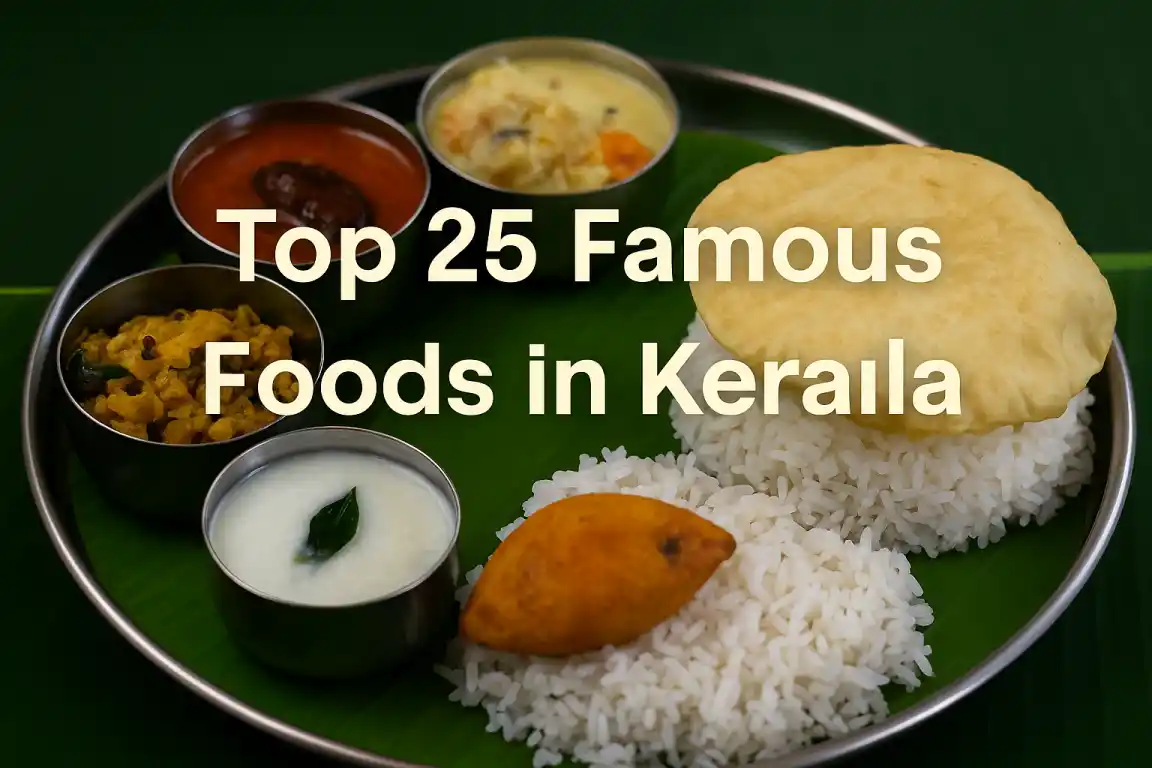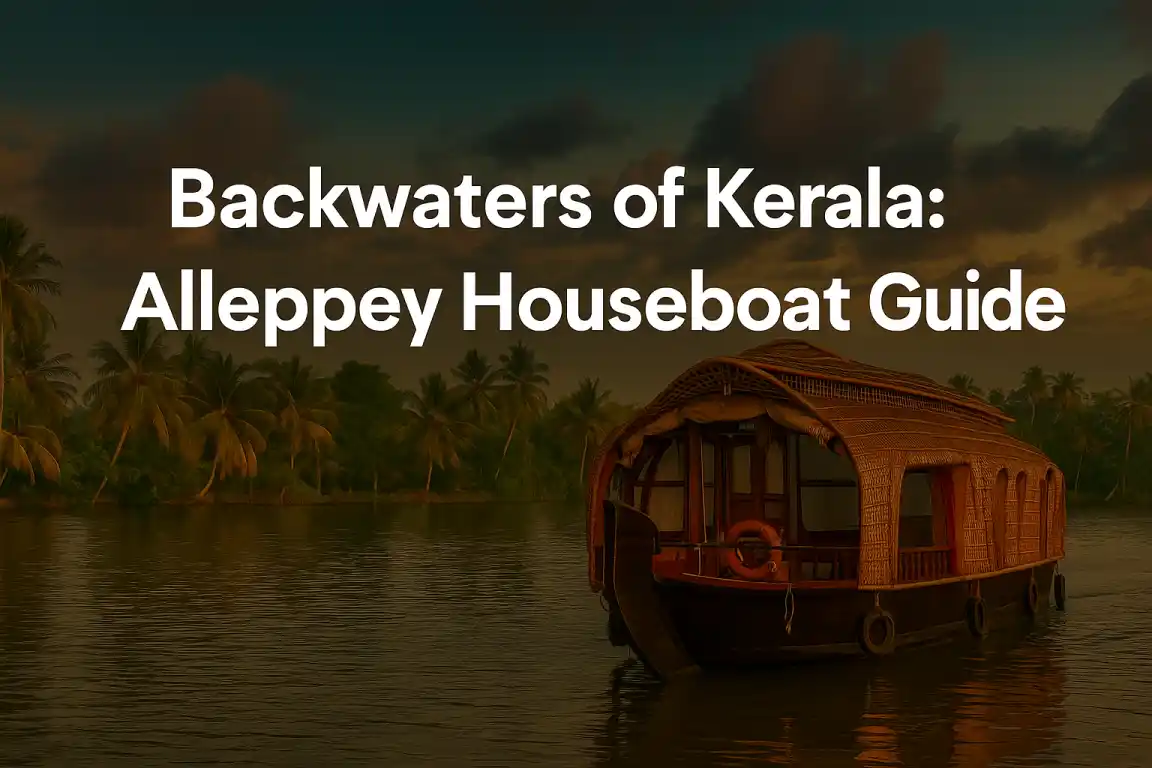


Kerala is commonly referred to as God’s own country, as it is not only a popular tourist attraction with its backwaters and culture, but also with its gorgeous traditional outfits. Planning a trip soon? Check out our Kerala tour packages to explore the best of God’s Own Country with Troper Tours. The traditional dress of Kerala state reflects its heritage, weather, and way of life. Besides, these clothes are associated with purity, simplicity, and elegance. Men and women in Kerala dress in ways that portray comfort and class. Thus, we are going to discuss the 7 most recognizable Kerala traditional dresses that could reflect the cultural diversity and identity of this bright country.
Cultural Significance of Kerala’s Traditional Dresses
The clothing of Kerala is closely related to its climate, way of life, and culture. Every piece of clothing is a balance of simplicity and sophistication. In addition, the natural fabrics that are used are very comfortable in the humid weather of Kerala.
Key highlights include:
- Admiration of tradition and heritage.
- Favoring handloom and cotton fabrics.
- White and gold colors are used to signify purity.
Most importantly, these traditional clothes of Kerala have connectivity across generations, and cultural identity remains alive in a contemporary world.
List of The Top 7 Traditional Dresses of Kerala
1. Mundu – The Pride of Kerala Men
One of the most common and elegant traditional Indian men’s clothing items is the Mundu. It is similar to a dhoti and usually is white or cream with a gold border known as kara. Mundu is worn on the waist and tucked down.
- Design: Made of cotton, it suits the Kerala climate, which is humid.
- Occasions: Worn every day, and worn on festivals or in visits to the temple.
- Style Tip: Wear it with a white shirt or silk kurta when attending a formal occasion.
- Read more about the top tourist places in Kerala that showcase the state’s natural and cultural beauty.
In addition, Mundu is a symbol of simplicity and grace. It is the costume of Kerala that symbolizes the real soul of the cultural heritage of the state.
2. Kasavu Saree – The Epitome of Grace for Women
The most well-known traditional dress of the women of the Kerala state is the Kasavu Saree. It is a Golden-bordered white or cream-colored saree called Kasavu. It is worn by women primarily on Onam, Vishu, and weddings.
- Fabric: Cotton or silk with zari work of gold.
- Events: Suitable during cultural festivals and temple ceremonies.
- Cultural Signification: Representation of purity and grace.
In addition, Kasavu Saree is not merely a garment; it is a representation of femininity in Kerala. As such, it continues to be one of the best Kerala traditional dresses of all time.
3. Set Mundu -The Two-Piece Wonder
The Set Mundu is also referred to as Mundum Neriyathum, which is a two-piece garment resembling a saree. It is composed of a lower garment (mundu) and an upper garment (neriyathu).
- Style: Worn cascading on the shoulder.
- Surface: Typically cotton with colored or golden trim.
- Occasion: Onam and family functions.
Furthermore, this is a Kerala costume that is a vital component of any woman. It is a symbol of humility, custom, and beauty. Consequently, Set Mundu is still worshiped by all women of every generation.
4. Melmundu – The Symbol of Dignity
For men, the Melmundu or Angavastram is a complement to the Mundu. It is a cloth that is worn over the shoulders and is usually of the same color as the Mundu.
- Wearing: It is typically used in religious and cultural events.
- Color Palette: Mainly white, with slight borders.
- Cultural Significance: Reflects respect and honor.
Most importantly, the Melmundu is an inseparable part of the traditional garment of Kerala, particularly in the case of festivals or temple visitations. As such, it is a symbol of pride and piety among men in Kerala.
5. Pattu Pavada – A Festive Delight for Young Girls
Pattu Pavada is the cutest Kerala traditional clothing among young girls. It consists of a long skirt (pavada) and a blouse (choli), traditionally of silk.
- Design: Golden-bordered bright colors.
- Occasions: Suits, weddings, festivals, and family reunions.
- Cultural Connection: Represents innocence and tradition.
In addition, this garment is usually presented to young females during Onam and Vishu. Therefore, it helps in fostering cultural pride since childhood and links the new generation to the heritage of Kerala.
6. Chatta and Mundu – The Legacy of Syrian Christian Women
The Chatta and Mundu are amongst the most unique traditional attire in Kerala, which has a special place in the community of the Syrian Christian. Chatta is a long-sleeved white blouse, and Mundu is a long wrap skirt.
- Cultural Background: Origins of the Kerala Christian community.
- Design: White in color, simple and elegant.
- Occasions: Worn in church and in other celebration events.
Moreover, this is a Kerala costume that is valued because of its modesty and purity. It perfectly fuses religion and fashion, which represents the cultural and religious harmony in Kerala.
7. Lungi -The Everyday Comfort Wear
Lungi is a loose garment worn by men and is a comfortable piece of clothing that is very colorful. This is in contrast to the Mundu, as it has bright designs and patterns.
- Material: Lightweight cotton, which is ideal in Kerala’s tropical climate.
- Applications: Widespread among men in rural and urban areas.
- Colors: Blue, green, and red, and checkered patterns.
- Plan your next trip with our Munnar Thekkady Alleppey holiday package to explore Kerala’s culture and scenic beauty in one journey.
Moreover, the Lungi symbolizes simple and free-day life. Likewise, it is a simple traditional garment of the Kerala state, which is convenient in hot weather. Thus, it is still in demand as casual wear in the region.
Final Words
To summarize, the clothing in Kerala is not just clothes, but identity, culture, and pride. Starting with the plain Mundu and up to the graceful Kasavu Saree, every costume of Kerala speaks of tradition and beauty. In addition, these clothes unite generations and represent the unity of Kerala in terms of diversity.
So there are brand-new clothes that, in case you want to taste the spirit of this lively state, you can begin with them. Kerala traditional dresses are interwoven with charm, purity, and legacy, and embrace this legacy.
Frequently Asked Questions About the Traditional Dress of Kerala
1. What makes Kerala’s traditional dress unique compared to other Indian states?
The traditional dress of Kerala is known for its simplicity, comfort and cultural essence. Handwoven Nature of Cotton and Silk Suitable for Humid Tropics Color: White, Gold – Symbolizes Purity and Elegance While the North Indians have a vibrant dressing sense, the dress code in Kerala is all about peace and elegance- matching perfectly with its relaxed lifestyle and spiritual significance.
2. When do people in Kerala wear traditional dresses like Kasavu Saree and Mundu?
Common traditional clothing includes the Kasavu wear for women, which is either a set or saree, and the Mundu for men when worn on celebratory occasions like festivals and family pujas. But the dresses remain a staple and not just for formal events — many locals wear them day to day, particularly in Kerala’s rural areas where they are cool, chic and effortlessly comfortable (the state’s climate is warm).
3. What fabrics are used to make Kerala’s traditional dresses?
The customary attire of Kerala consists largely of natural fibers and lighter materials to keep people cool during the hot, humid climate in the region. Cotton Mundus and Set Mundus are used for regular use, the silk Kasavu Sarees are usually worn during festivals and functions. These are products that showcase Kerala’s close ties to nature and handloom tradition.
4. Can tourists buy or wear traditional Kerala dresses during their visit?
Absolutely! Tourists are often encouraged to explore the culture by dressing up in traditional Kerala attire. The Traditional (Kasavu) Sari, Set Mundu and Mundum can be bought from local markets, co-operative handloom stores and textile shops in cities such as Kochi, Trivandrum and Thrissur. Wearing these dresses will help you connect to Kerala’s real culture, particularly during Onam or while visiting temples.
5. How is traditional attire still relevant in modern Kerala?
And not even then is Kerala’s customary dress in the least eclipsed by contemporary fashion influences; urbanites return obsessively for its interiors. The designs have changed — lighter fabrics, more stylish blouses and contemporary cuts but they’re still very cultural. Today, the contemporary youths adorn a modern version of Set Mundu or Kasavu Saree for any festive occasions to make it clear that in Kerala tradition and voguish can go hand in hand.


